Fix: Netflix Black Screen Issue on Any Device
Netflix may show the black screen if the installation of the Netflix application is corrupt. Moreover, a corrupt firmware/OS of the device may also cause the issue at hand. The issue arises when a user tries to watch a movie/show on Netflix but encounters a black screen (sometimes with sound & subtitles). The issue is reported on nearly all the platforms like browsers, apps (iOS, Android, TV, consoles, streaming devices, etc.), Windows, Mac, Linux, etc.

You can solve the Netflix black screen issue by trying the solutions below but before that, make sure no sharing or recording application is causing the issue. Also, check if disconnecting an external monitor solves the problem. Moreover, make sure the playback resolution of the external display (monitor/projector) matches the main display resolution. Check if using another HDMI cable solves the black screen issue. Additionally, check if re-logging Netflix solves the issue at hand. Make sure the OS/firmware of your device is updated (like update the system’s Windows) to the latest release.
If you are encountering the issue on a Windows PC, then check if reinstalling the graphics driver of your system solves the problem.
If the black screen issue is occurring on a Mac, then check if creating a new user account on the Mac clears out the issue. If you are using Apple’s Cloudkit, then make sure it is not performing any background operations on the Safari browser (if the issue is occurring in the Safari browser).
For the Linux users, check if reinstalling the Widevine sorts out the black screen issue.
General Troubleshooting:
Restart the Devices
A temporary malfunction of any of your devices (mobile, TV, console, Firestick, PC, networking equipment, etc.) may cause the black screen in Netflix, & restarting the devices may solve the problem.
- Power off your devices (including the networking equipment) & unplug them from their respective power sources. Also, disconnect your devices from each other.

Unplug Power Cable of PS4 - Then press & hold the power button of the devices like TV, consoles, etc. for 30 seconds.
- Now wait for 1 minute & then connect back the devices to the power sources.
- Then power on the devices & check if Netflix is clear of the black screen
Reinstall the Netflix App for TV, Mobile, Console, or Streaming Devices
Netflix may show the black screen if the installation of its app is corrupt & reinstalling the Netflix app (as per the platform) may solve the problem. For illustrative purposes, we will discuss the process for the Netflix app on the Android platform.
- Launch the Settings of your Android device & select Apps (or Applications).
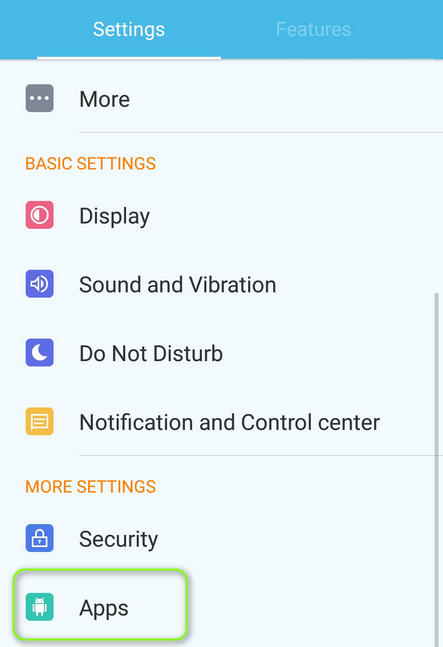
Open Apps in the Android Phone’s Settings - Then open Netflix & tap on the Force Stop button.
- Now confirm to stop the Netflix app & tap on the Uninstall button.
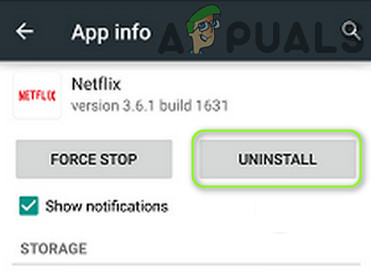
Uninstall Netflix - Then confirm to uninstall the Netflix app & once uninstalled, power off your Android device.
- Now power on your device & reinstall the Netflix app to check if it is clear of the black screen issue.
Reset Your Device to the Factory Defaults
A corrupt firmware/OS of your device could be the reason behind the Netflix black screen & resetting your device to the factory defaults may solve the problem. For elucidative purposes, we will discuss the process of resetting the Samsung TV to the factory defaults. Before proceeding, do not forget to back up the essential info & data (as everything will wipe cleaned). Also, you should try this method after exhausting all other solutions in this article.
- Open General in the Settings of your Samsung TV & select Reset. If the Reset option is not present in the General tab, then check in the Support>> Self Diagnostics tab.

Reset Samsung TV to Defaults - Now enter the PIN of the TV (if prompted to) & select Reset.
- Once the Samsung TV is reverted to the factory defaults, set it up as a new & install Netflix to check if its black screen issue is resolved.
Keep in mind that in case of a console or PC, make sure to select Keep All Files & Applications.
For Browsers (Netflix Web App)
Disable the Hardware Acceleration of the Browser
Netflix may not work in a browser if the hardware acceleration of the browser is enabled (as it may hinder the DRM module of the Netflix website). Disabling the hardware acceleration of the browser may solve the black screen problem. But before proceeding, check if playing the Netflix content in another browser sorts out the issue. For illustrative purposes, we will discuss the process to disable the hardware acceleration of the Chrome browser.
- Launch the Chrome browser & open its menu (click on 3 vertical ellipses in the top right of the window).
- Now select Settings & head to the System tab (after expanding the Advanced option in the left pane of the window).
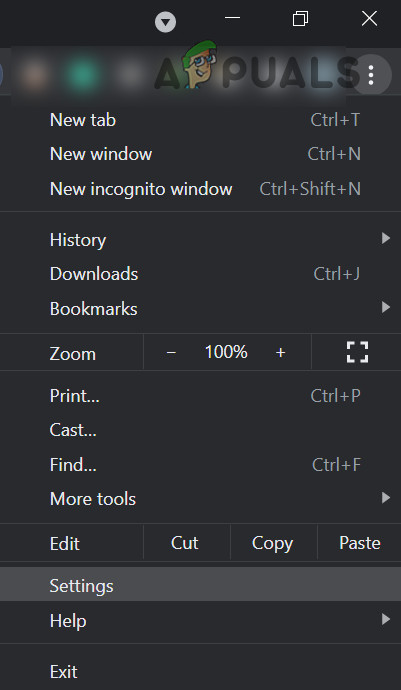
Open the Chrome Settings - Then toggle off the switch of Use Hardware Acceleration When Available & relaunch Chrome to check if Netflix is working fine in the browser.
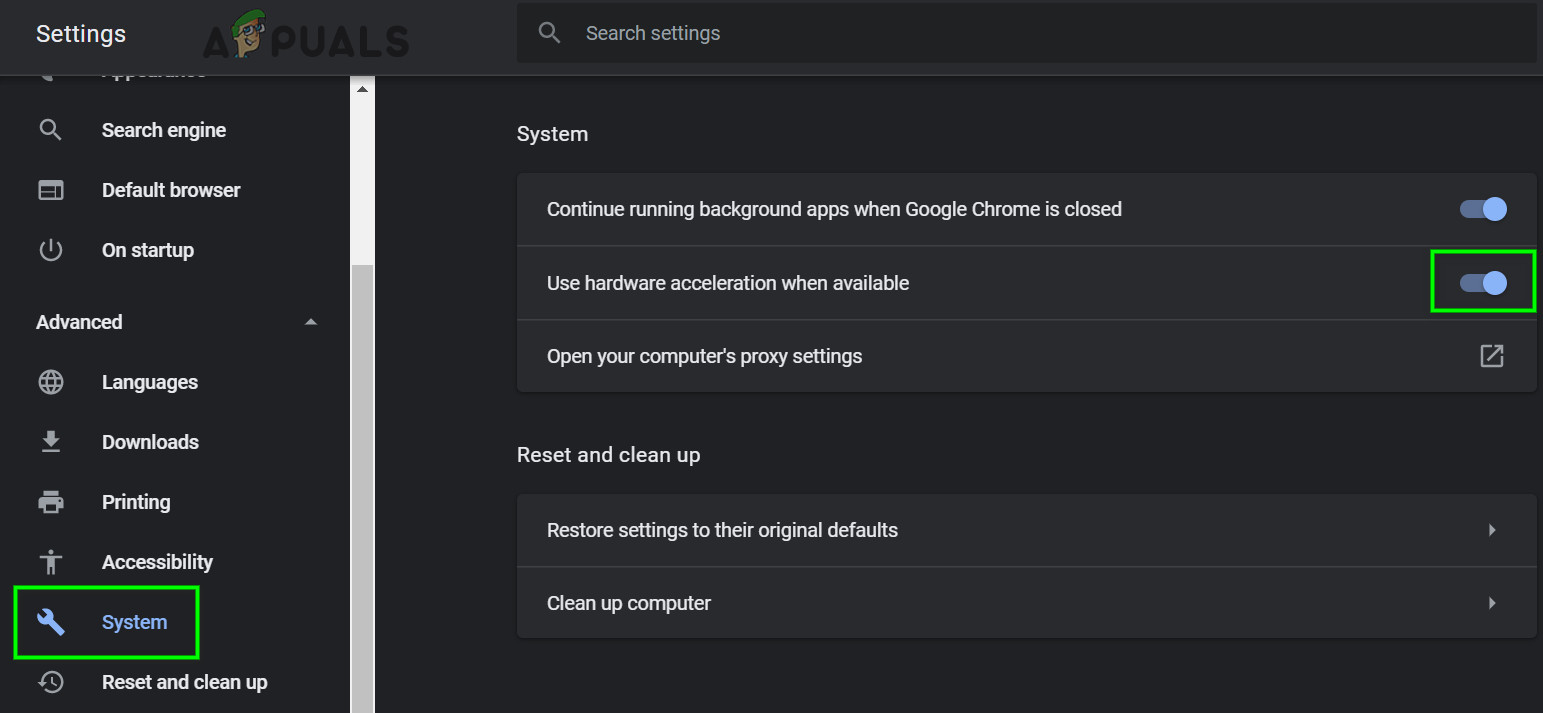
Disable Hardware Acceleration of the Chrome Browser
Allow All Auto-Play for Netflix in the Safari Settings
If all autoplay is not enabled in the Safari browser settings, it may cause the Netflix black screen; enabling Allow All Auto-Play in the Safari Settings may solve the problem.
- Launch the Safari browser & navigate to the Netflix website.
- Now open the Safari Menu & click on Settings for This Website.
- Then, in the popup window shown, expand Auto Play & select Allow All Auto-Play.

Enable Allow All Auto-Play in the Safari Settings for Netflix - Now reload the Netflix website & check if the black screen issue is resolved.
Uninstall Chrome Remote Desktop
Netflix may show a black screen if the Chrome Remote Desktop is installed on your system & allowed to record the system’s screen, as it may trigger the Netflix DRM protection mechanism. In this context, uninstalling the Chrome remote desktop may solve the problem.
- Launch the Chrome browser & open its Extension menu (by clicking on the extension icon near the top right).
- Now select Manage Extensions & Remove the Chrome Remote Desktop extension.

Remove Chrome Remote Desktop extension from Chrome - Then open the Chrome menu (by clicking on 3 vertical ellipses in the top right) & hoover over More Tools.
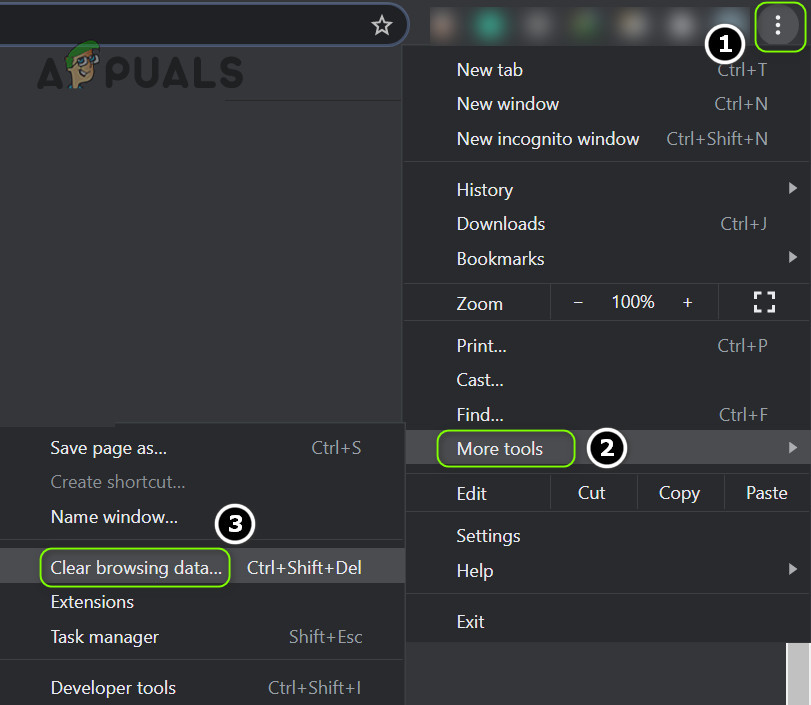
Open Clear Browsing Data in the Chrome Menu - In the sub-menu, select Clear Browsing Data, & near the bottom of the screen, click on Sign Out.
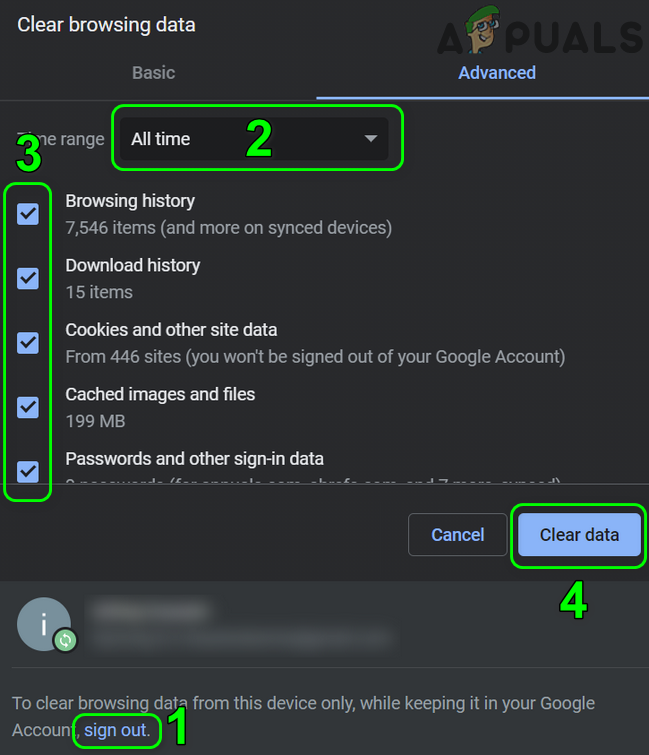
Clear the Browsing Data of Chrome - Then select All Time (in the Time Range box) & checkmark all the categories.
- Now click on the Clear Data button & once done, relaunch Chrome to check if the Netflix issue is resolved.
For Android Applications
Disable Draw Over Other Apps in Mobile Settings
Many apps require special access to draw over other apps (which allows one app to appear on other apps) & if an app is permitted on your phone to draw overlays over others, the Netflix app may treat it as an application trying to record or share the screen which it blocks as a DRM protection, resulting in the Netflix black screen. In this case, disabling the apps’ permission to draw over other apps may solve the problem. The Navigation Dock, Fooview & Sesame Shortcuts apps are reported to cause the issue at hand.
- Launch the Android device’s Settings & open Apps (or Manage Apps).
- Now tap on the Gear icon (in the top right corner) & open Special Access.
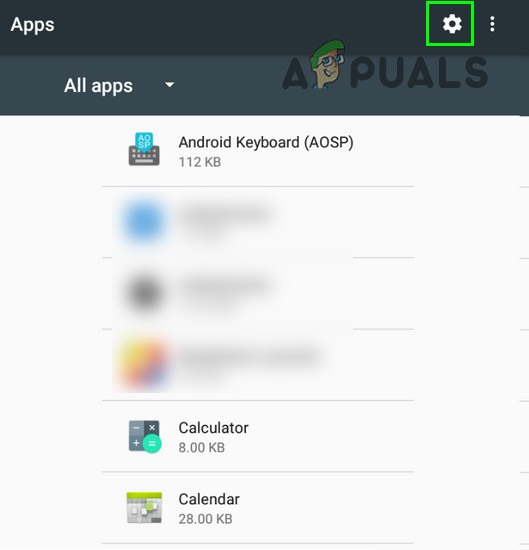
Click on the Gear Icon in the Application Manager - Then select Draw Over Other Apps & make sure no app is permitted to draw over other apps.

Open Settings of Special Access Applications - Now launch the Netflix app & check if it is clear of the black screen issue.
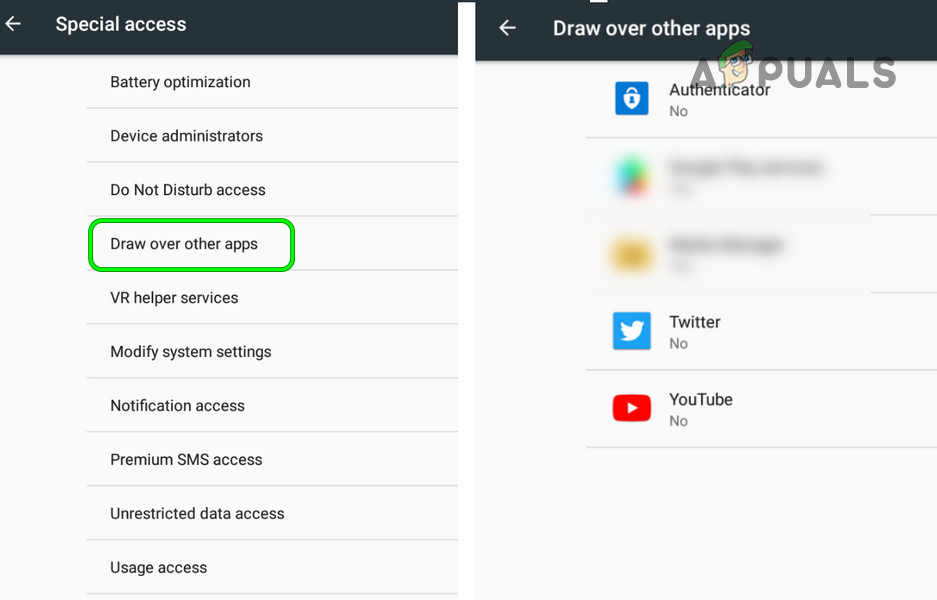
Disable Draw Over Other Apps
Disable the Power Saving Mode of the Mobile Phone
The Netflix app may display the black screen issue if the power saving mode of the mobile phone is enabled as it limits different background operations (essential for the operation of Netflix) of the phone. In this case, disabling the power-saving mode of the mobile phone may solve the problem.
- Launch the phone’s settings & open Battery (or Power Saving Mode).
- Now disable the Power Saving mode or Ultra Power Saving Mode, otherwise, you may select Normal Mode.
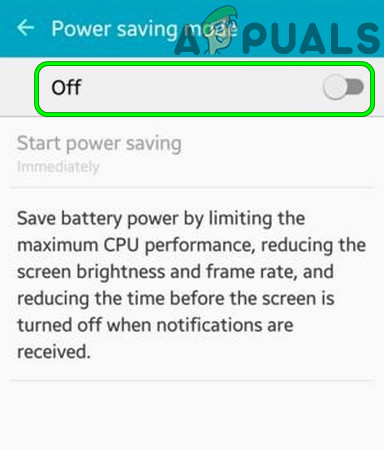
Disable Power Saving Mode of the Mobile - Then restart the phone & upon restart, launch the Netflix app to check if its black screen issue is resolved.
Disable Eye Comfort Mode of the Mobile Phone
The eye comfort mode is used to reduce the eye strain of the user by filtering the blue light but this feature may trigger the blocking (sharing or recording) mechanism of the Netflix app & cause the issue at hand. In this context, disabling the eye comfort feature of the mobile phone may solve the problem.
- Launch your phone’s Settings & open Display.
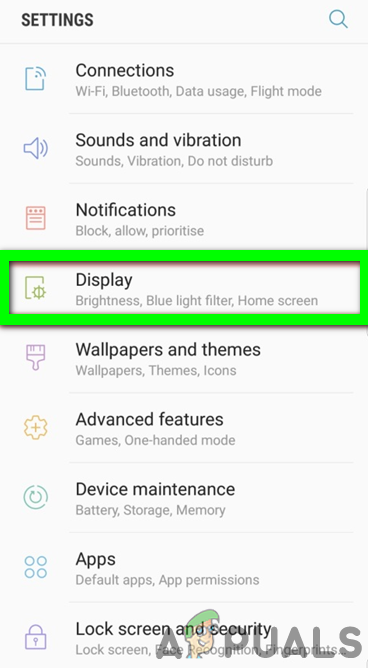
Open Display In the Phone’s Settings - Now select Eye Comfort & toggle its switch to the off position.
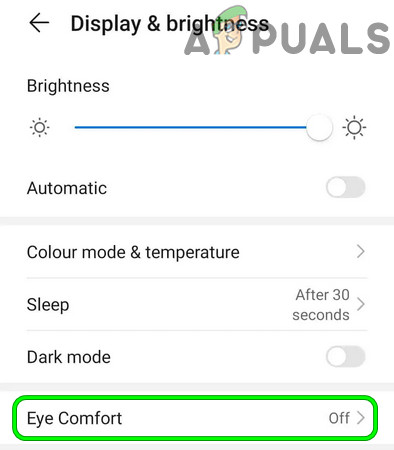
Disable Eye Comfort in the Phone’s Settings - Then reboot your phone & upon reboot, check if the Netflix app is working fine.
For the Smart-TV Users
Disable UHD or 4K in TV Settings
If your network or TV is having trouble playing the 4K/UHD content (although there is a slight difference between the both, the term is used interchangeably), then Netflix may show the black screen. In this scenario, disabling the UHD or 4K in the TV settings may solve the problem. For illustration, we will discuss the process for the Apple TV.
- Navigate to the Video & Audio section in the Settings of the Apple TV & open Format.

Open Video & Audio in the Settings of Apple TV - Now select 1080P SDR 60Hz & save your changes.

Open Format in the Video & Audio Settings of Apple TV - Then check if Netflix is working fine & the black screen issue is resolved.

Set Video & Audio Format of Apple TV to 1080SDR
Disable Instant on in the TV Settings
Many OEMs (like Samsung) have included features (like Instant-on) in their TVs to speed up the boot time of the TV but these types of features might hinder the operation of Netflix & disabling such features may solve the problem. For illustration, we will discuss the process to disable the Instant-on of a Samsung TV.
- Open the Menu of your Samsung TV & steer to the System tab (in the left pane).
- Now scroll down till you find the option of General & then open General.
- Then click on Samsung Instant-on & select Off.
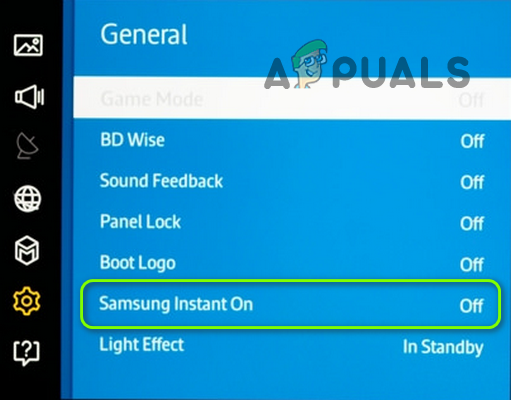
Disable Samsung Instant on - Now restart your TV & check if Netflix black screen issue is resolved.
For Streaming Devices
Disable Auto-Adjust Display Refresh Rate
Your Netflix may show the black screen on a streaming device (like Roku) if the streaming device is auto-adjusting the display refresh rate which may trigger the sharing/recording blocking mechanism of Netflix. In this scenario, disabling the auto-adjust display refresh rate of the streaming device may solve the problem. For illustration, we will discuss the process for a Roku device.
- Launch the Settings of the Roku device & select System.
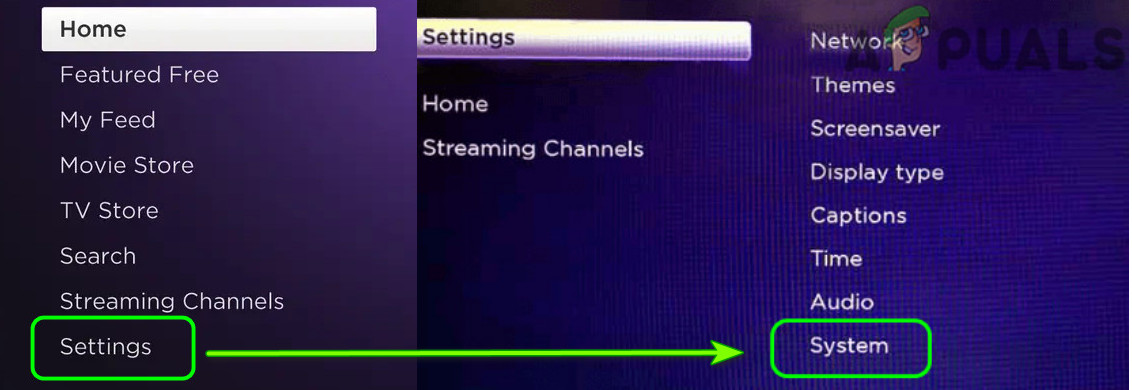
Open System in the Roku Settings - Then open Advanced System Settings & select Advanced Display Settings.

Open Advanced Display Settings of Your Roku Device - Now open Auto-Adjust Display Refresh Rate & disable it.

Set Auto-Adjust Display Refresh Rate to Disabled - Then launch Netflix & check if the black screen issue is resolved.
For the Console Users
Force the Console to Use the Older Version of HDCP
HDCP is a technology used to protect digital content but its newer version may not be compatible with the console or Netflix app (resulting in the issue at hand) & forcing the console to use the older version of HDCP may solve the problem (but keep in mind that Netflix may not play 4K videos).
- Boot the Playstation console into the safe mode & select Change Video Output (the 2nd option).
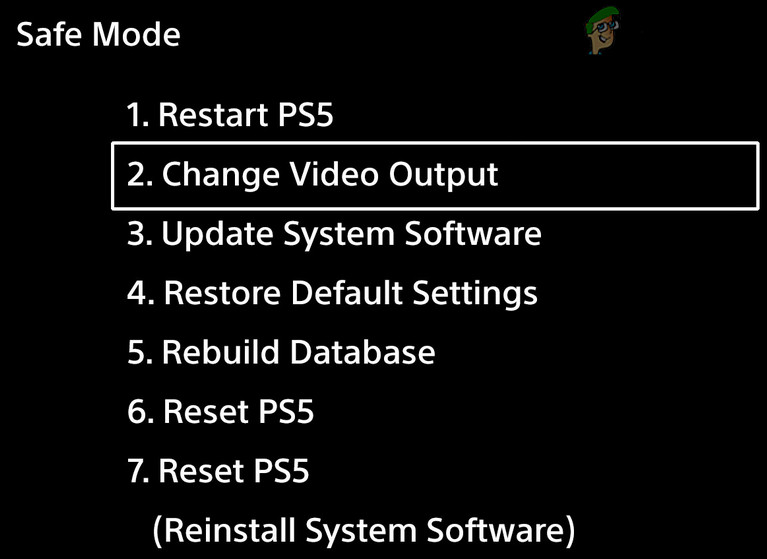
Open Change Video Output in the Safe Mode of PlayStation - Now open HDCP Mode & select HDCP 1.4 Only.
- Then boot the console into the normal mode & check if the Netflix black screen issue is resolved.
Disable Dolby Vision
Dolby Vision is a technology used to enhance the multimedia output but this enhancement may cause Netflix to show the black screen (as Dolby Vision may have triggered the DRM protection mechanism of Netflix). In this case, disabling the Dolby Vision may solve the Netflix issue.
- Launch the Settings of the Xbox console & open General.
- Now select TV & Display Options & open Video Modes.
- Then uncheck the options of Allow Dolby Vision & Auto HDR.
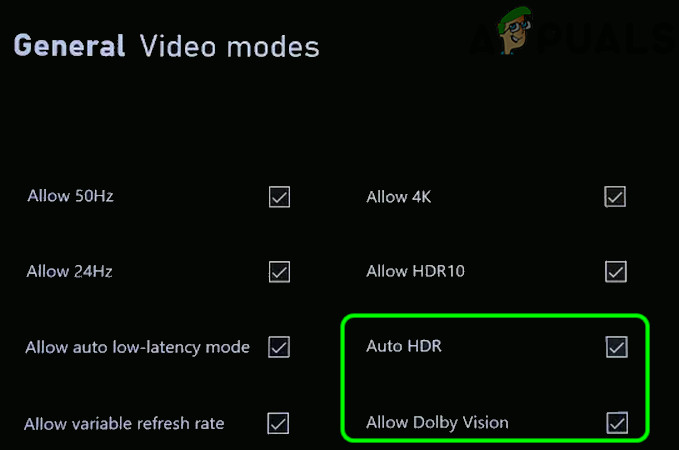
Disable Auto HDR & Allow Dolby Vision in the Xbox Settings - Now restart the console & upon restart, hopefully, the black screen issue of Netflix is resolved.





